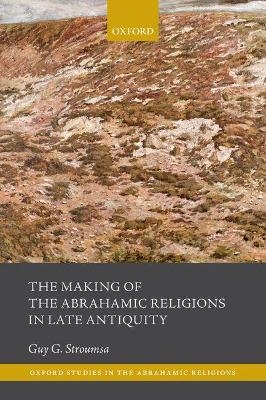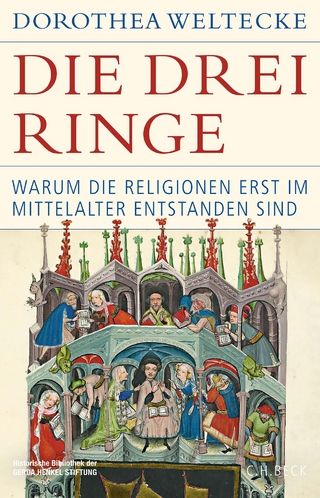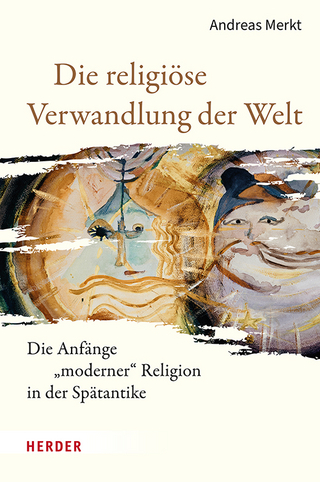
The Making of the Abrahamic Religions in Late Antiquity
Seiten
2017
Oxford University Press (Verlag)
978-0-19-878600-9 (ISBN)
Oxford University Press (Verlag)
978-0-19-878600-9 (ISBN)
The book studies how the religious structures of late antique religion (in particular Christianity) forged the core elements that became identified with those of the Abrahamic religions after the birth of Islam.
This book presents how ancient Christianity must be understood from the viewpoint of the history of religions in late antiquity. The continuation of biblical prophecy runs like a thread from Jesus through Mani to Muhammad. And yet this thread, arguably the single most important characteristic of the Abrahamic movement, often remains outside the mainstream, hidden, as it were, since it generates heresy. The figures of the Gnostic, the Holy man, and the mystic are all sequels of the Israelite prophet. They reflect a mode of religiosity that is characterized by high intensity. It is centripetal and activist by nature and emphasizes sectarianism and polemics, esoteric knowledge, or gnosis and charisma. The other mode of religiosity, obviously much more common than the first one, is centrifugal and irenic. It favours an ecumenical attitude, contents itself with a widely shared faith, or pistis, and reflects, in Weberian parlance, the routinisation of the new religious movement. This is the mode of priests and bishops, rather than that of martyrs and holy men. These two main modes of religion, high versus low intensity, exist simultaneously, and cross the boundaries of religious communities. They offer a tool permitting us to follow the transformations of religion in late antiquity in general, and in ancient Christianity in particular, without becoming prisoners of the traditional categories of Patristic literature. Through the dialectical relationship between these two modes of religiosity, one can follow the complex transformations of ancient Christianity in its broad religious context.
This book presents how ancient Christianity must be understood from the viewpoint of the history of religions in late antiquity. The continuation of biblical prophecy runs like a thread from Jesus through Mani to Muhammad. And yet this thread, arguably the single most important characteristic of the Abrahamic movement, often remains outside the mainstream, hidden, as it were, since it generates heresy. The figures of the Gnostic, the Holy man, and the mystic are all sequels of the Israelite prophet. They reflect a mode of religiosity that is characterized by high intensity. It is centripetal and activist by nature and emphasizes sectarianism and polemics, esoteric knowledge, or gnosis and charisma. The other mode of religiosity, obviously much more common than the first one, is centrifugal and irenic. It favours an ecumenical attitude, contents itself with a widely shared faith, or pistis, and reflects, in Weberian parlance, the routinisation of the new religious movement. This is the mode of priests and bishops, rather than that of martyrs and holy men. These two main modes of religion, high versus low intensity, exist simultaneously, and cross the boundaries of religious communities. They offer a tool permitting us to follow the transformations of religion in late antiquity in general, and in ancient Christianity in particular, without becoming prisoners of the traditional categories of Patristic literature. Through the dialectical relationship between these two modes of religiosity, one can follow the complex transformations of ancient Christianity in its broad religious context.
Guy G. Stroumsa is Professor Emeritus of the Study of the Abrahamic Religions at University of Oxford and Martin Buber Professor of Comparative Religion Emeritus at the Hebrew University of Jerusalem. He obtained his PhD from Harvard in 1978. Professor Stroumsa received a Doctor Honoris Causa from the University of Zurich in 2004, an Alexander von Humboldt Research Award in 2008, and a Chevalier dans l'Ordre du Mérite in 2012. He is a member of the Israel Academy of Sciences and Humanities.
PART I: TRANSFORMATIONS OF RELIGION IN LATE ANTIQUITY; PART II: THE TRUE PROPHET; PART III: RELIGIOUS COMMUNITIES AND GOD'S LAW; PART IV: THE WAY TO MECCA
| Erscheinungsdatum | 28.09.2017 |
|---|---|
| Reihe/Serie | Oxford Studies in the Abrahamic Religions |
| Verlagsort | Oxford |
| Sprache | englisch |
| Maße | 156 x 235 mm |
| Gewicht | 376 g |
| Themenwelt | Geschichte ► Teilgebiete der Geschichte ► Religionsgeschichte |
| Religion / Theologie ► Christentum ► Kirchengeschichte | |
| Geisteswissenschaften ► Religion / Theologie ► Judentum | |
| Geisteswissenschaften ► Religion / Theologie ► Islam | |
| ISBN-10 | 0-19-878600-X / 019878600X |
| ISBN-13 | 978-0-19-878600-9 / 9780198786009 |
| Zustand | Neuware |
| Informationen gemäß Produktsicherheitsverordnung (GPSR) | |
| Haben Sie eine Frage zum Produkt? |
Mehr entdecken
aus dem Bereich
aus dem Bereich
Herkunft, Blüte, Weg nach Osten
Buch | Hardcover (2024)
C.H.Beck (Verlag)
CHF 55,90
warum die Religionen erst im Mittelalter entstanden sind
Buch | Hardcover (2024)
C.H.Beck (Verlag)
CHF 53,90
die Anfänge „moderner“ Religion in der Spätantike
Buch | Hardcover (2024)
Verlag Herder
CHF 67,90


